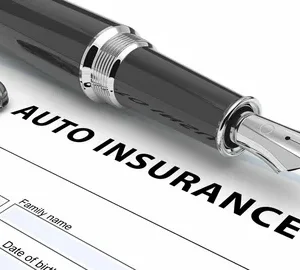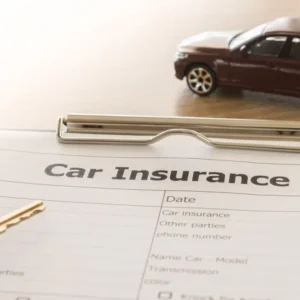Introduction: Why Car Insurance Minimums Matter
Driving without sufficient insurance is like sailing without a lifejacket—legal in only the rarest waters, and perilous even then. In the United States, every state (except New Hampshire) mandates drivers to carry a minimum level of car insurance to protect themselves and others if an accident occurs. Yet these mandates differ dramatically from coast to coast. Understanding your state’s minimums isn’t just about staying legal—it’s about ensuring you’re covered if the unexpected happens.
In this deep-dive, we’ll explore:
- What car insurance minimums consist of
- How state requirements compare
- Key implications for drivers
- Actionable insights on staying both legal and adequately protected
Let’s get started.
What Are Car Insurance Minimum Requirements?
Every mandated policy in the U.S. must include liability coverage, which splits into three buckets:
- Bodily Injury per Person (BI PP): Pays medical/legal costs for one individual injured in an accident you cause.
- Bodily Injury per Accident (BI PA): Covers all injury claims in a single crash you cause.
- Property Damage per Accident (PD PA): Handles costs to repair others’ property (often vehicles) when you’re at fault.
Some states layer on extra protections—Personal Injury Protection (PIP) or Uninsured/Underinsured Motorist (UM/UIM) coverage—making their “minimum” policies a bit richer (and pricier).
Quick example: In Florida, the bare minimum is 10/20/10 (i.e., $10,000 BI PP, $20,000 BI PA, $10,000 PD PA) plus mandatory PIP of $10,000 and UM/UIM of $10,000. That’s some of the lowest—and arguably riskiest—coverage in the nation.
State-by-State Breakdown of Car Insurance Minimums
Below is a representative snapshot of liability minimums across the spectrum. For a full, up-to-date table, consult this comprehensive list of minimum coverage requirements powered by Coverage.com.
| State | BI PP | BI PA | PD PA | Notes |
|---|---|---|---|---|
| Florida | $10,000 | $20,000 | $10,000 | Plus PIP & UM/UIM of $10K each |
| California¹ | $15,000 | $30,000 | $5,000 | Raised to 30/60/15 Jan 1, 2025 under SB 1107 ↗ |
| New York | $25,000 | $50,000 | $10,000 | Also requires no-fault PIP |
| Texas | $30,000 | $60,000 | $25,000 | |
| Maine | $50,000 | $100,000 | $25,000 | Among the highest minimums |
¹ California update: Effective January 1, 2025, Senate Bill 1107 raised BI to $30,000/$60,000 and PD to $15,000 to better reflect rising repair costs (San Francisco Chronicle).
Why Do Minimums Vary So Much?
- Risk tolerance & legislative history
- States with higher traffic densities or litigious cultures (e.g., New York, Massachusetts) typically set higher BI minimums.
- Lower-density states (e.g., Mississippi, Florida) often opt for leaner mandates to keep premiums affordable.
- Cost of medical care & repairs
- Regions with high healthcare costs drive up bodily injury limits.
- States facing frequent natural disasters (like California wildfires) may indirectly influence legislative appetite for higher PD limits.
- No-fault vs. At-fault systems
- No-fault states (e.g., Michigan, New Jersey) require PIP so drivers’ own policies pay immediate medical bills regardless of fault.
- At-fault states lean more heavily on liability minimums.
Key Comparisons: Highs, Lows, and Outliers
To spotlight extremes, here’s how the top five and bottom five states stack up:
| Lowest Minimums | BI PP | BI PA | PD PA |
|---|---|---|---|
| Florida | $10,000 | $20,000 | $10,000 |
| Pennsylvania | $15,000 | $30,000 | $5,000 |
| Louisiana | $15,000 | $30,000 | $25,000 |
| California² | $15,000 | $30,000 | $5,000 |
| Hawaii | $20,000 | $40,000 | $10,000 |
| Highest Minimums | BI PP | BI PA | PD PA |
|---|---|---|---|
| Maine | $50,000 | $100,000 | $25,000 |
| Alaska | $50,000 | $100,000 | $25,000 |
| Michigan³ | $50,000 | $100,000 | $10,000 |
| Massachusetts | $20,000 | $40,000 | $5,000 |
| New York | $25,000 | $50,000 | $10,000 |
² Note: California’s 5,000 PD PA is historically low, prompting the 2025 SB 1107 reforms (San Francisco Chronicle).
³ Michigan’s unique “choice no-fault” system effectively mandates PIP of $50K per person (Wikipedia).
Implications of These Variations
- Financial risk: Drivers in low-minimum states risk out-of-pocket expenses if damages exceed coverage. Imagine a $25,000 repair bill in Florida under a $10,000 PD cap—$15,000 comes directly from your wallet.
- Premium affordability vs. protection: Lean policies cost less. Bankrate reports average annual minimum-coverage premiums around $808, compared to $2,692 for full coverage (Bankrate).
- Potential for rate hikes: When states raise minimums—as California did for 2025—drivers should anticipate higher premiums (estimated $80–$400 more yearly) (San Francisco Chronicle).
Beyond Minimums: Coverage Types You Shouldn’t Ignore
While liability minimums keep you legal, they don’t cover:
- Your own injuries or vehicle repairs
- Hit-and-run or uninsured/underinsured at-fault drivers
Here are common add-ons to consider (definitions via Investopedia):
- Collision Insurance – Repairs your vehicle after an impact you cause.
- Comprehensive Insurance – Covers non-collision damage (theft, weather, vandalism).
- Uninsured/Underinsured Motorist (UM/UIM) – Pays when the at-fault driver lacks adequate insurance.
- Personal Injury Protection (PIP) – Your medical bills paid immediately, regardless of fault (required in no-fault states).
“State minimums often provide insufficient protection, potentially leaving the driver responsible for additional costs,” warns Investopedia’s breakdown of coverage types (Investopedia).
5 Actionable Tips to Stay Both Legal and Covered
- Verify Your State’s Latest Requirements
- State laws change. Check your Department of Insurance website or consult your insurer every renewal.
- Shop Around Annually
- Use online comparison tools. Bankrate and NerdWallet can show competitive quotes in minutes.
- Bundle Policies
- Combine auto with home or renters insurance for multi-policy discounts (often 10–25%).
- Adjust Deductibles Strategically
- Higher deductibles lower premiums but increase out-of-pocket costs if you file a claim.
- Consider Usage-Based Plans
- Pay-per-mile or telematics plans reward safe, low-mileage drivers with lower rates (WSJ).
Conclusion & Next Steps
Navigating the patchwork of state minimums can feel overwhelming—but staying informed is your first line of defense. Remember:
- Minimums = Legal floor, not safety ceiling.
- Review your policy annually for both legal compliance and adequate protection.
- Balance cost vs. coverage by understanding your risk tolerance and financial exposure.
Ready to take control? Start by looking up your state’s latest requirements, then get at least three quotes from reputable insurers. Your future self—and your wallet—will thank you.
Drive safely, stay covered, and keep those policies up to date!






